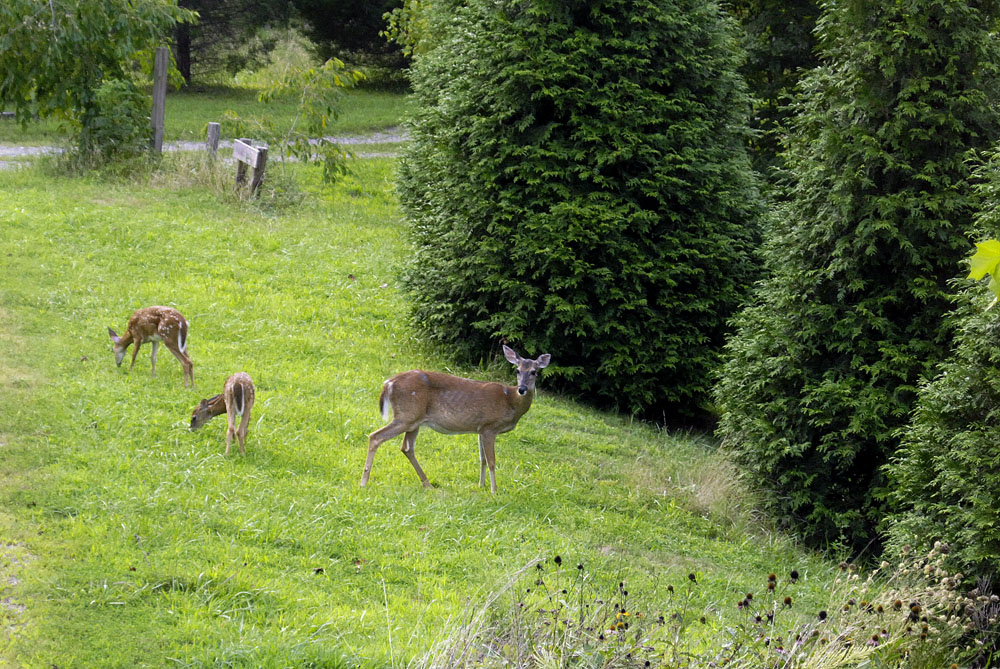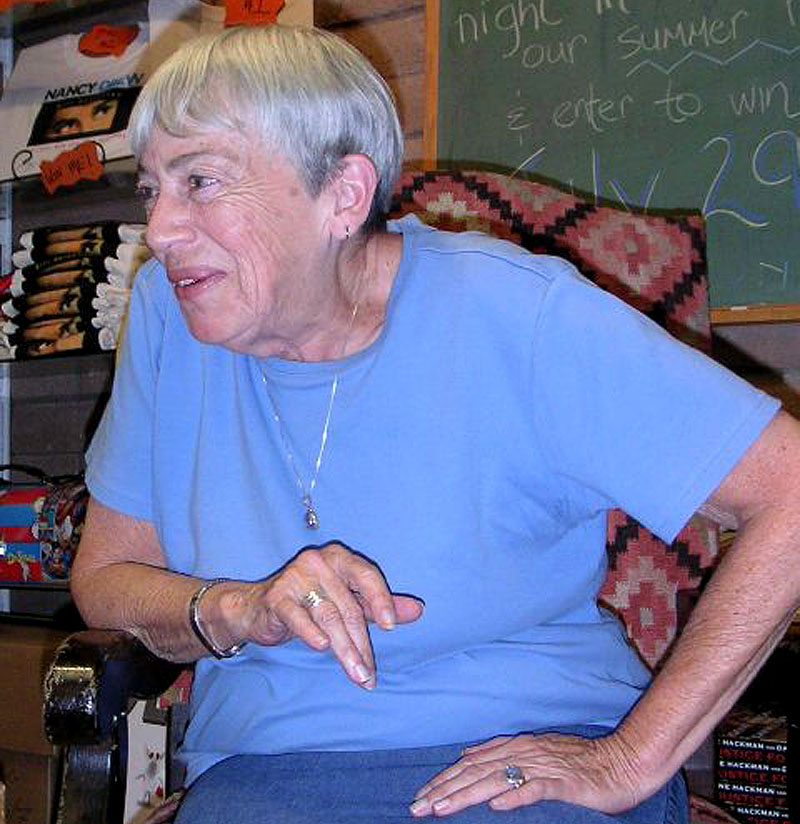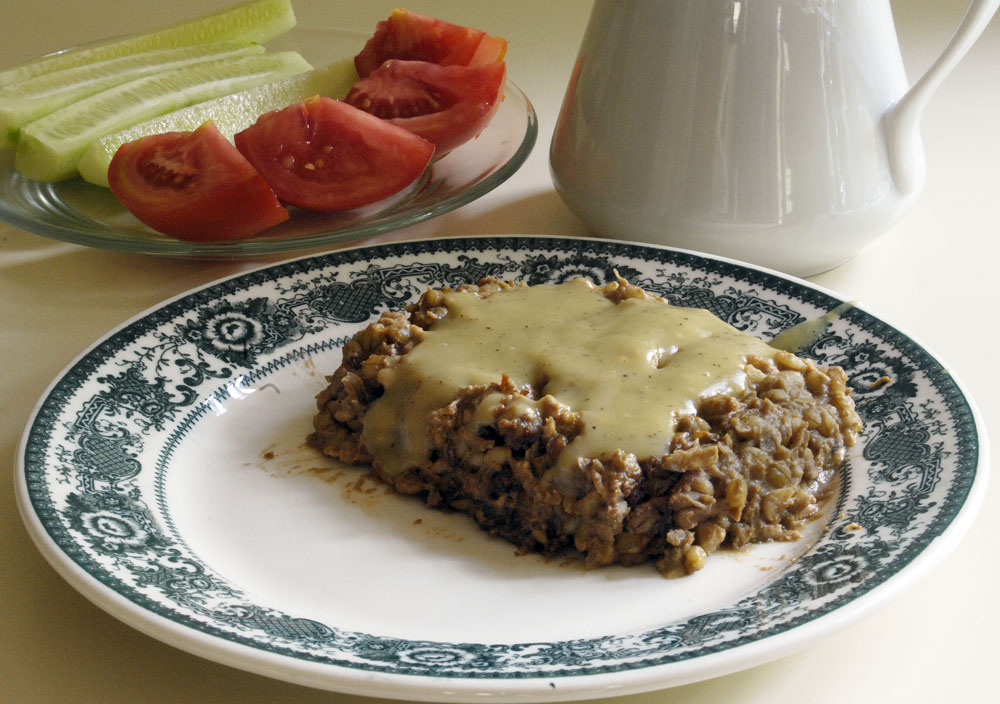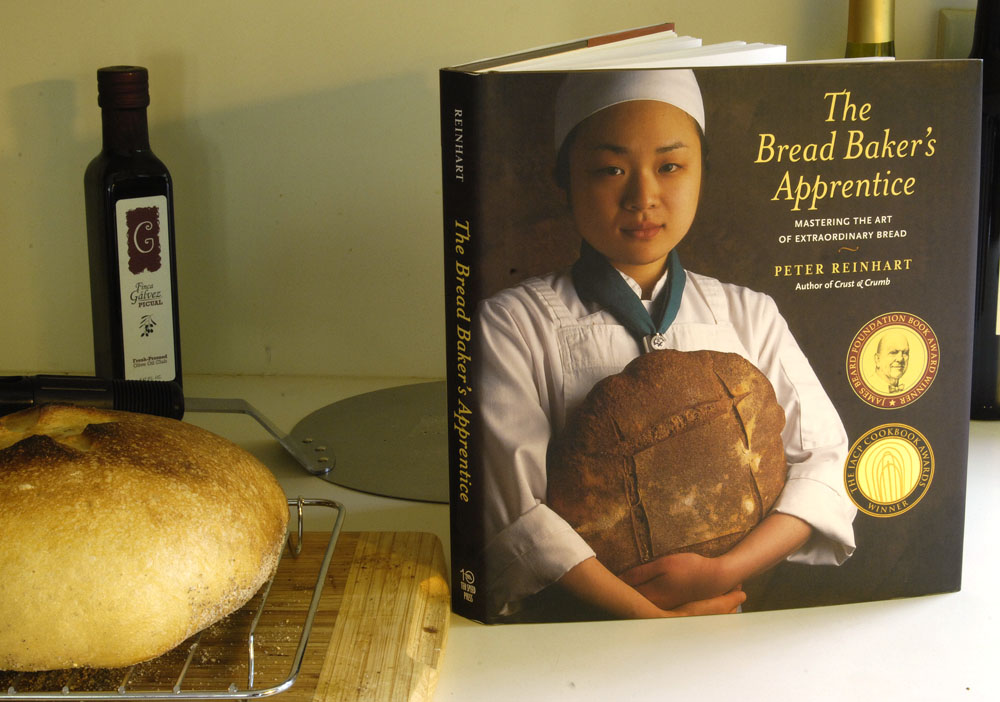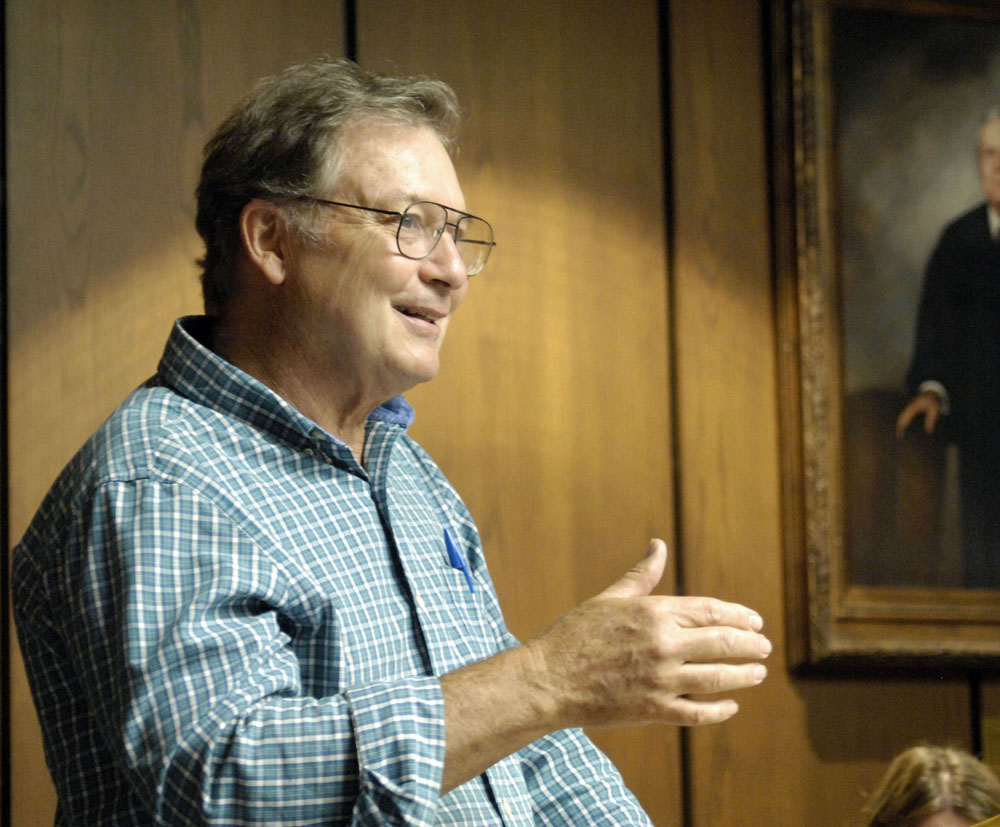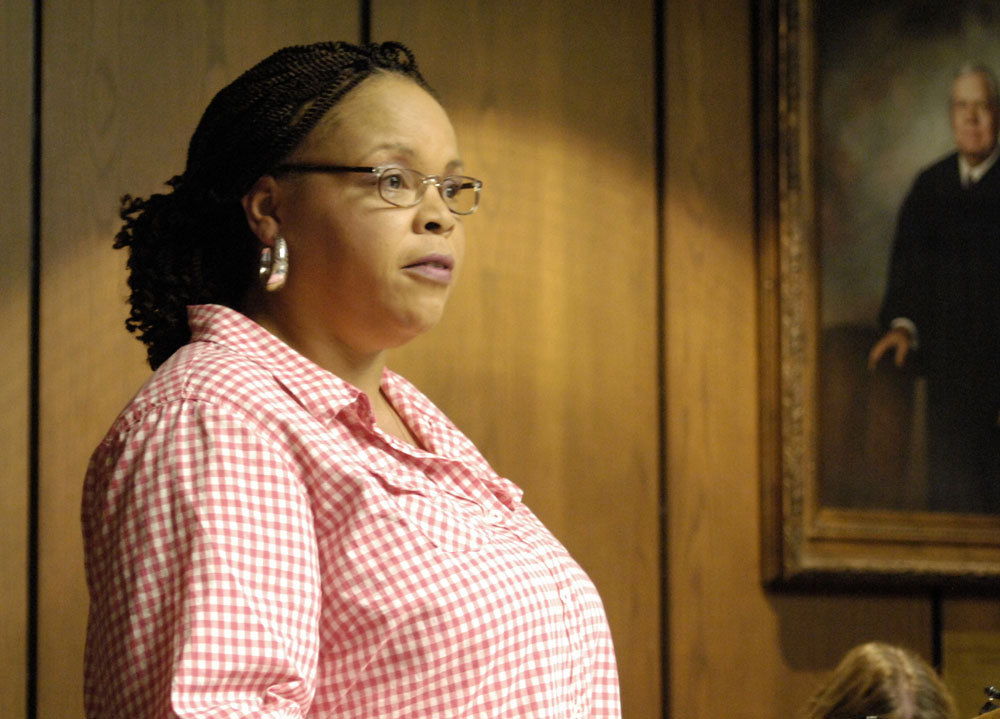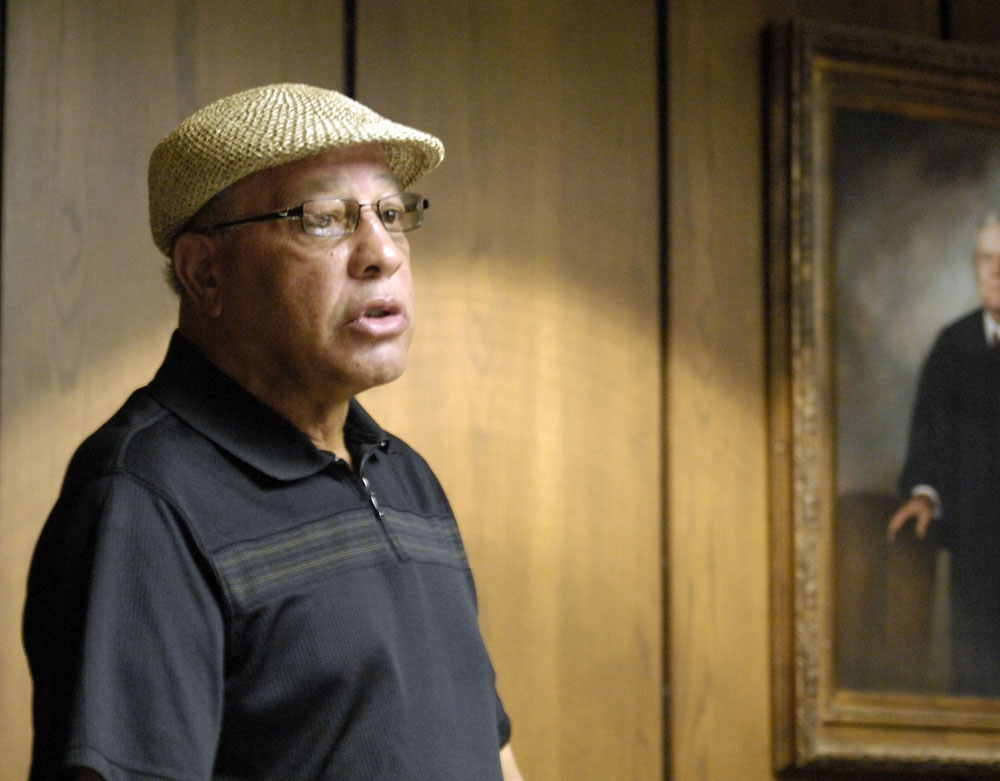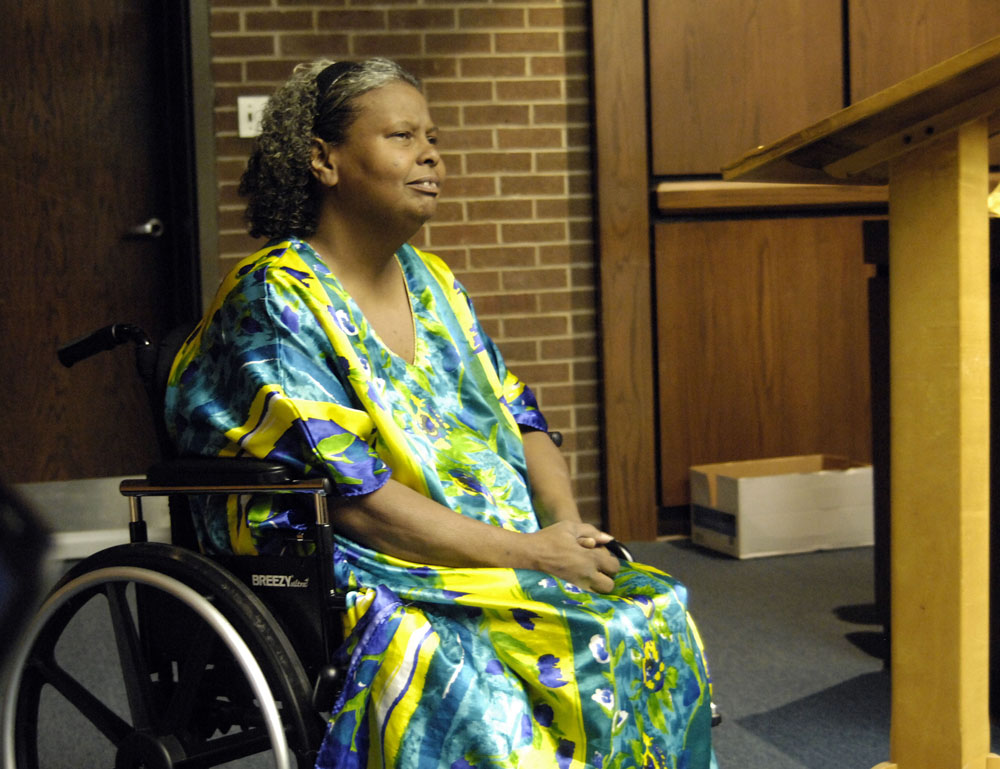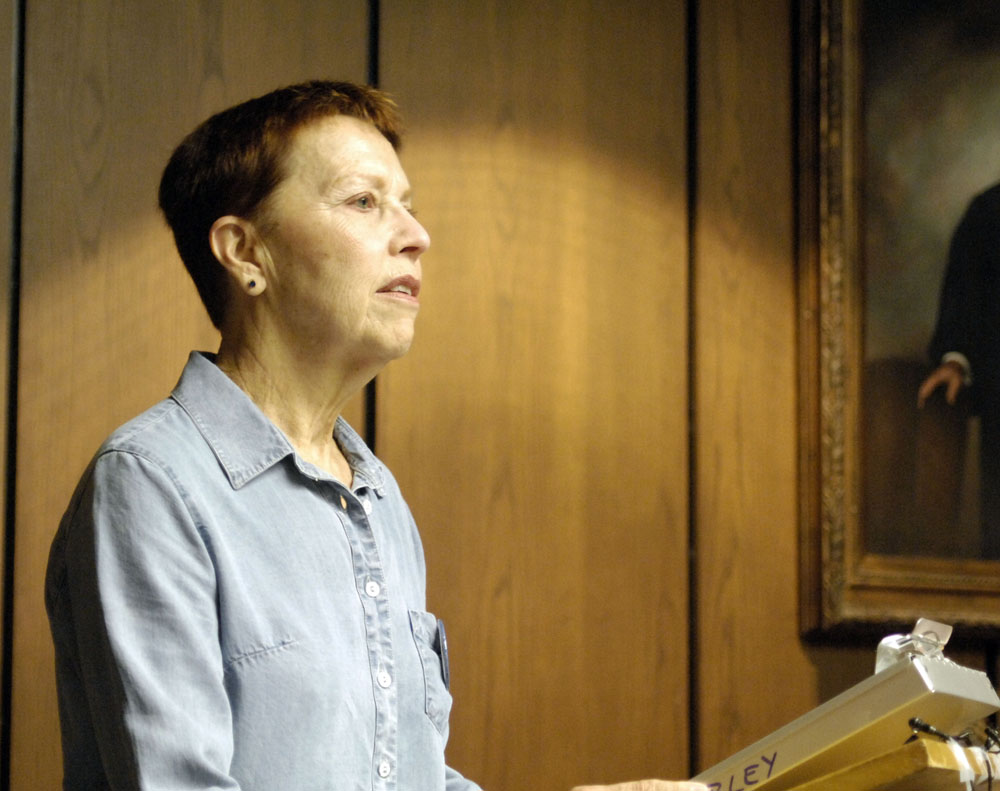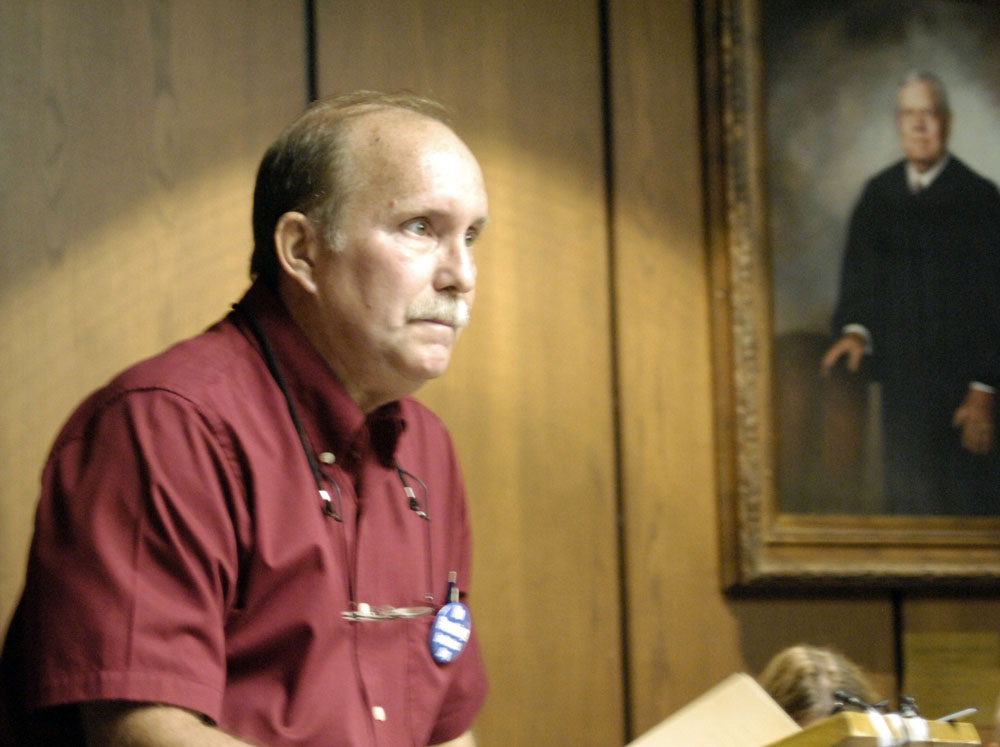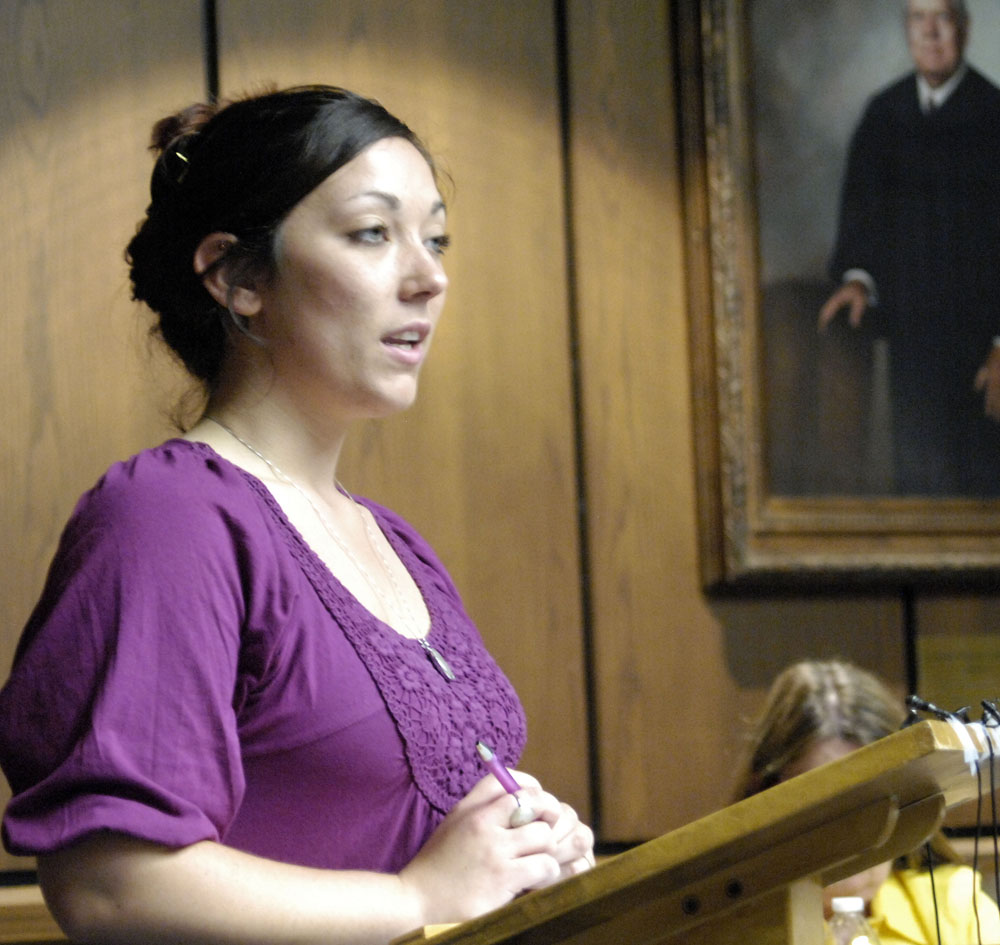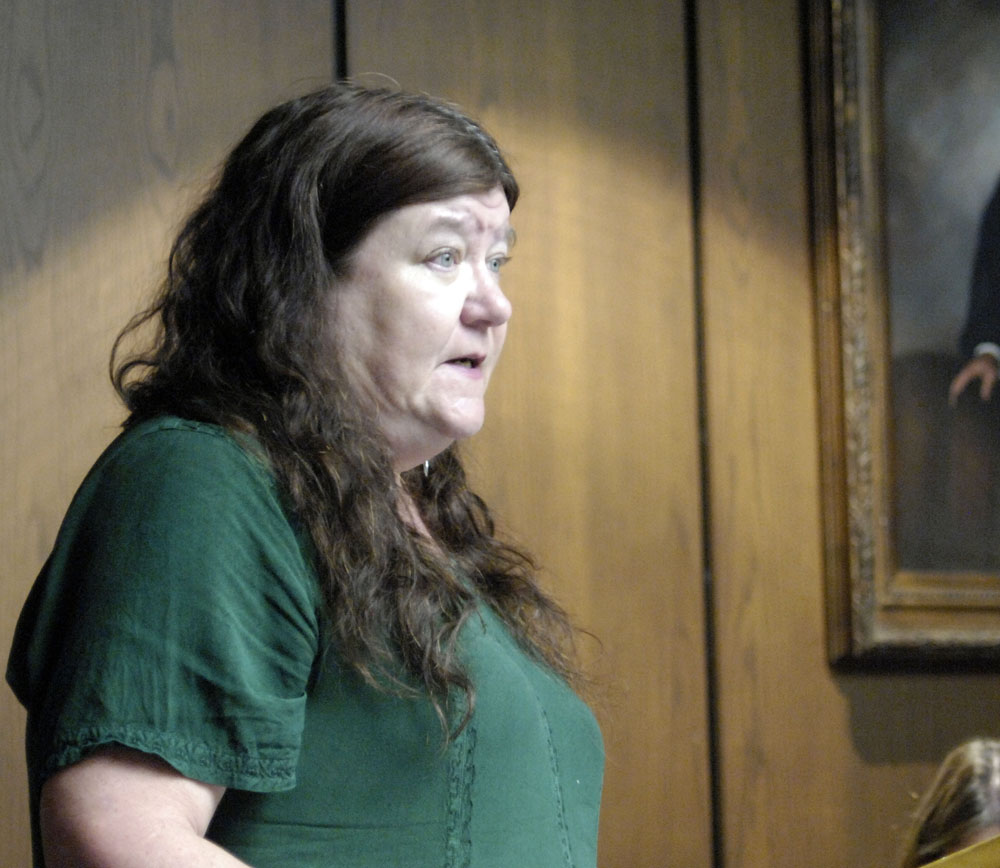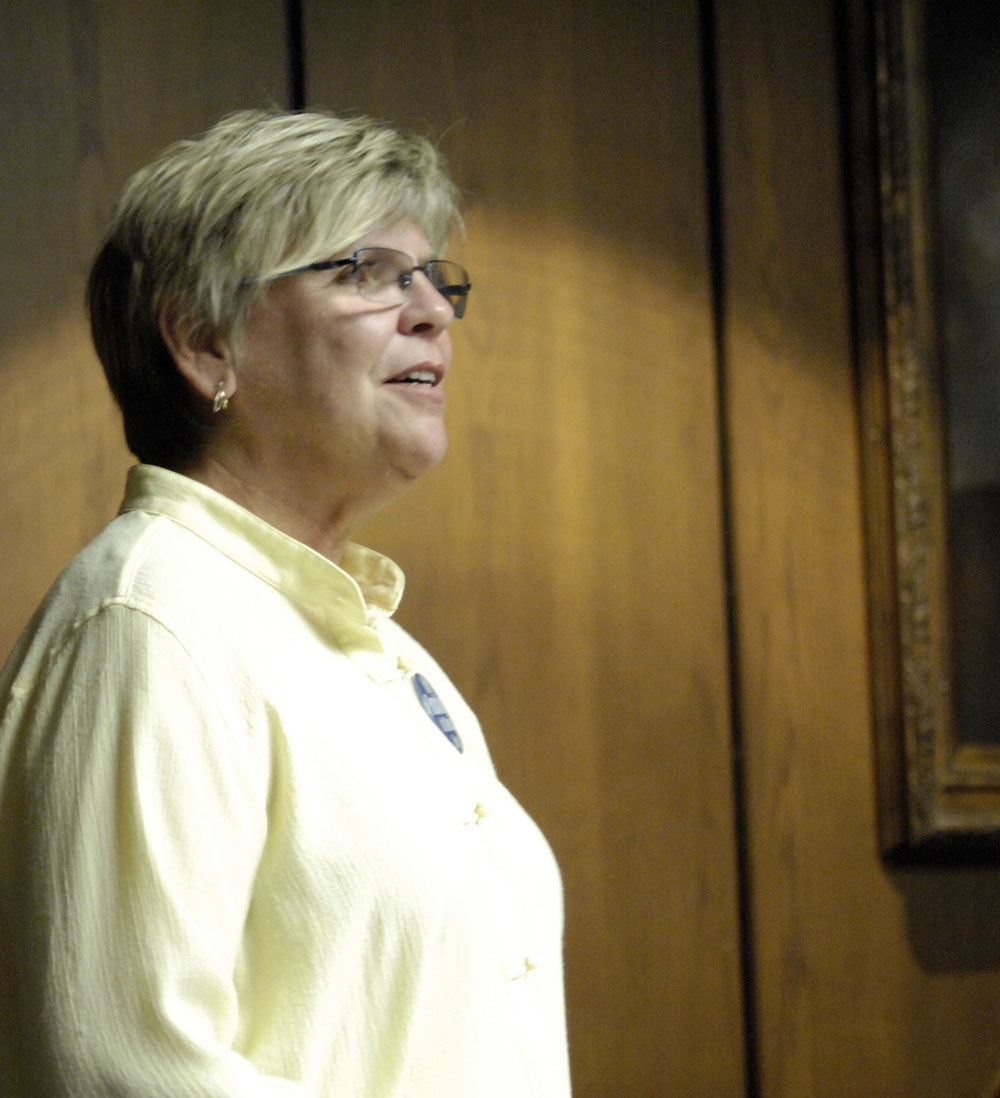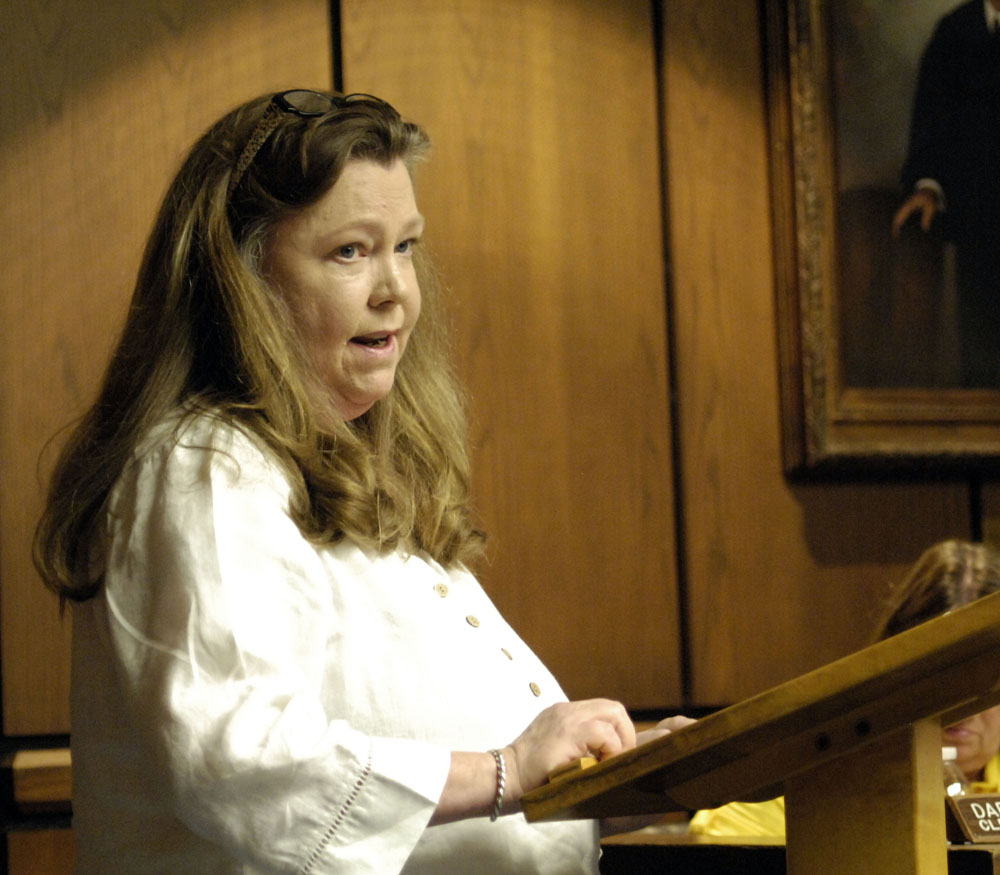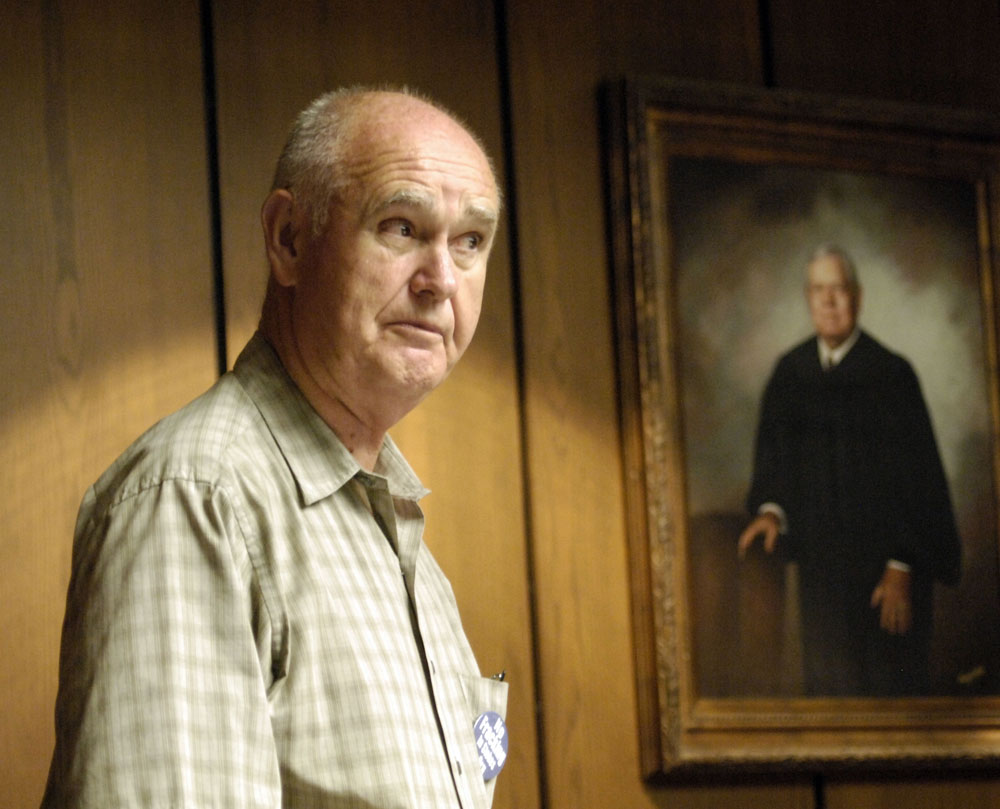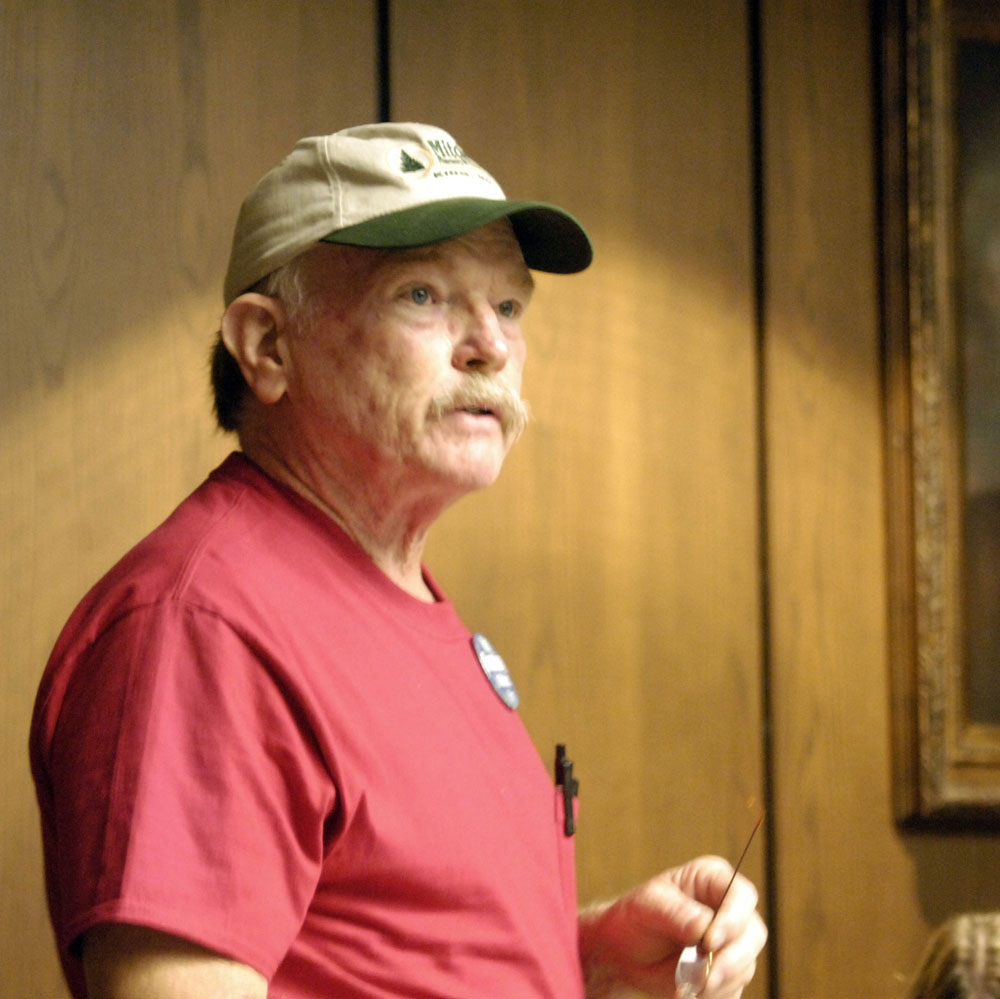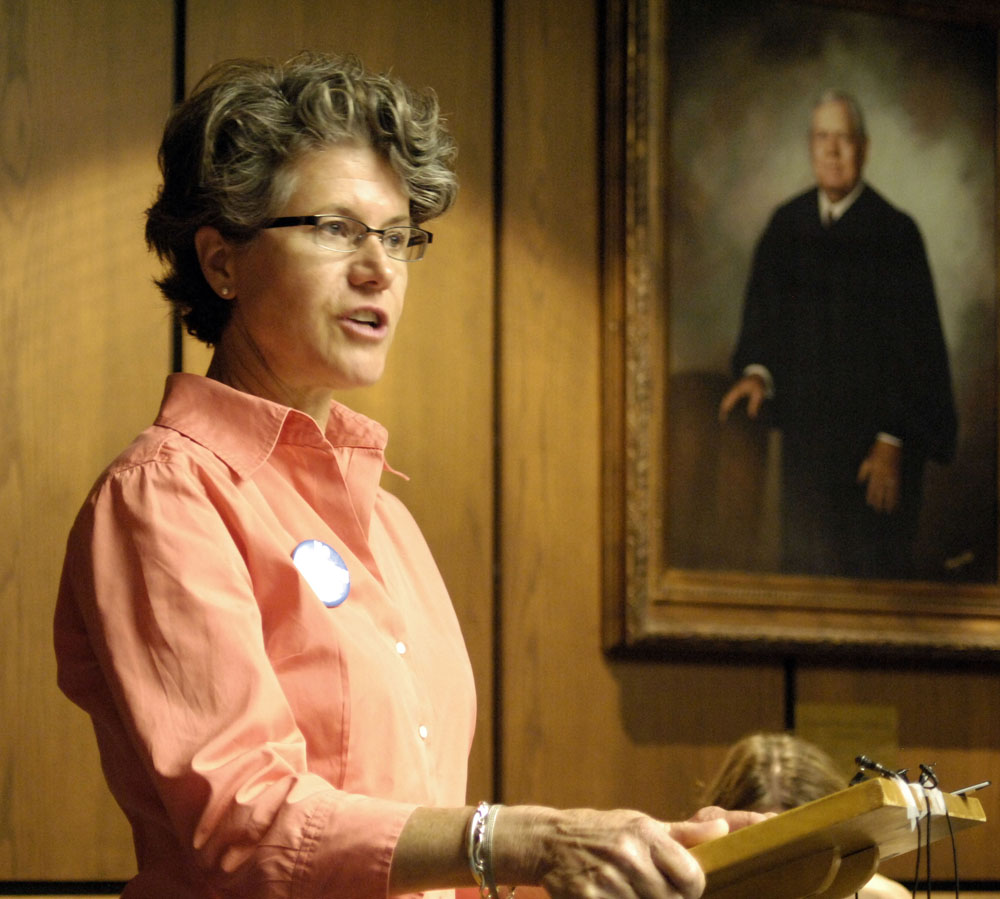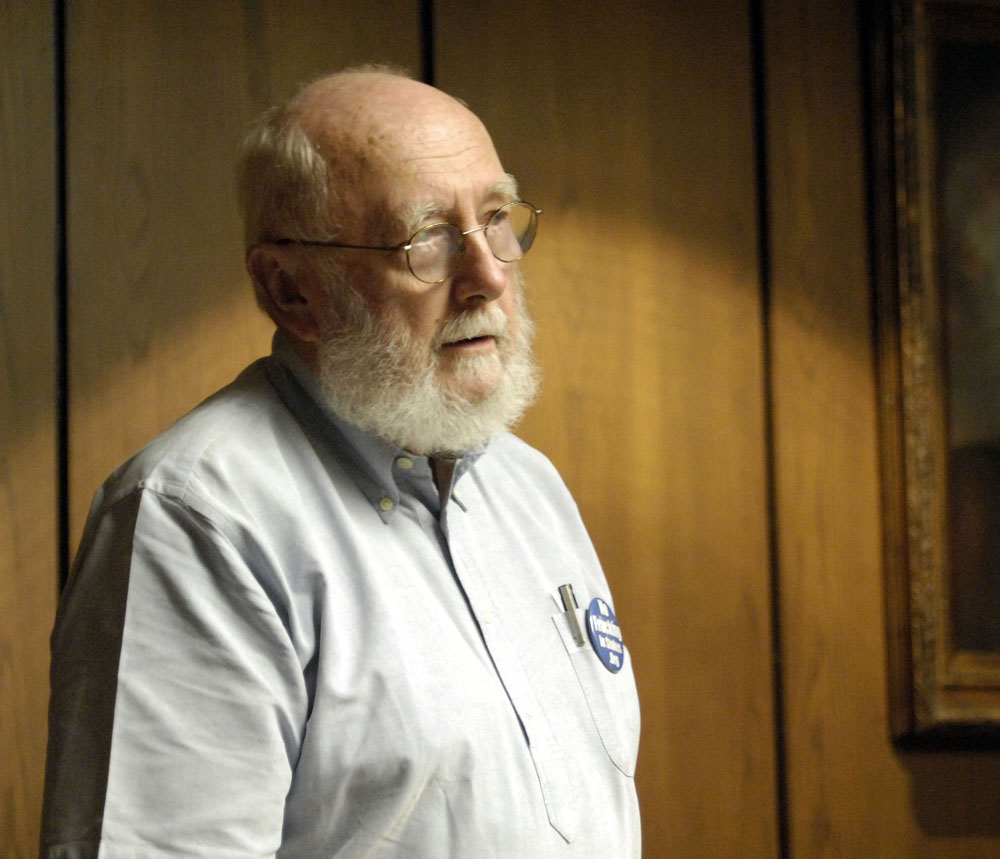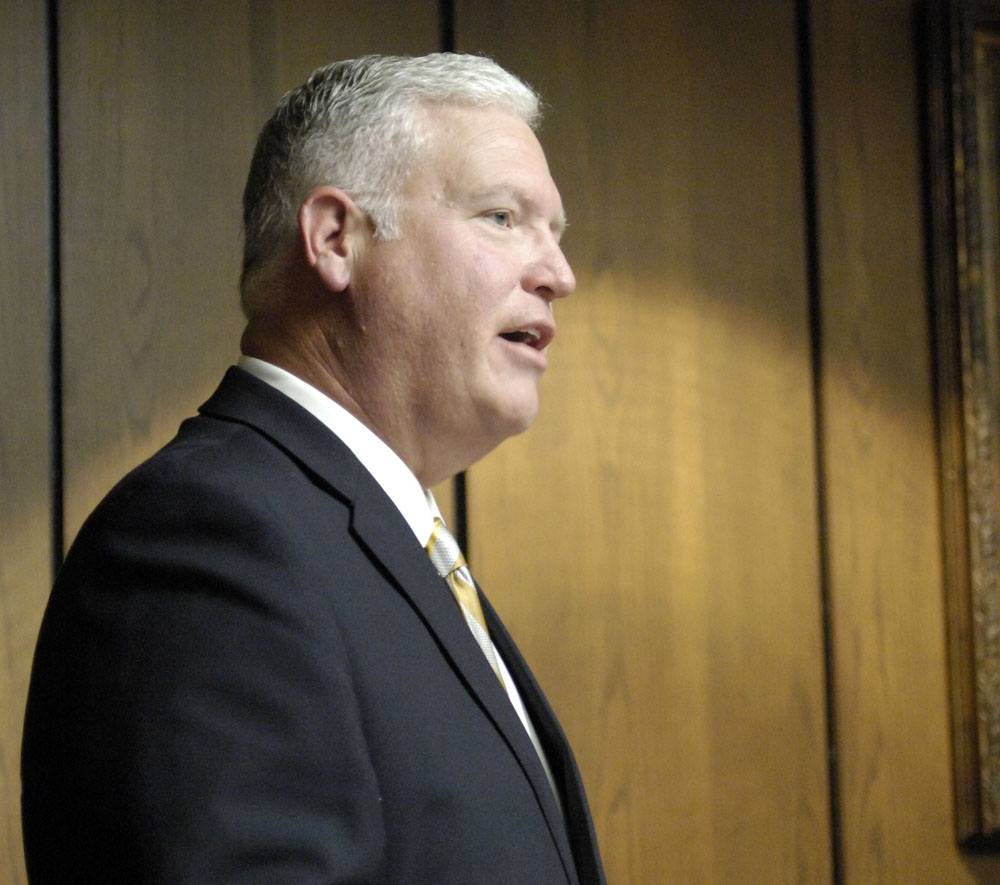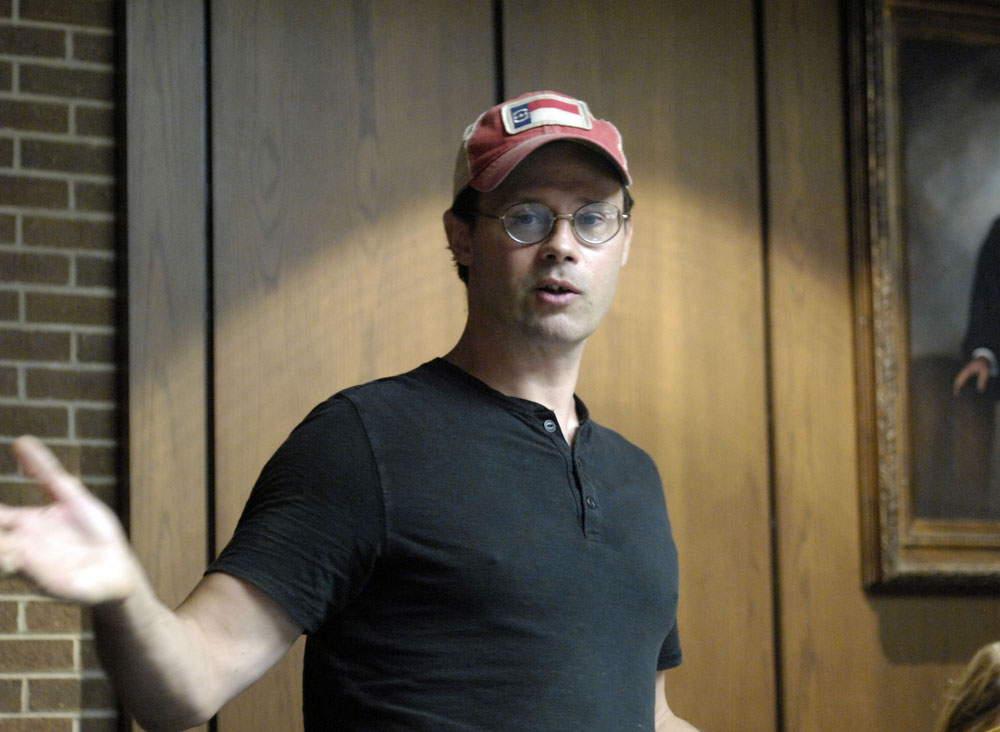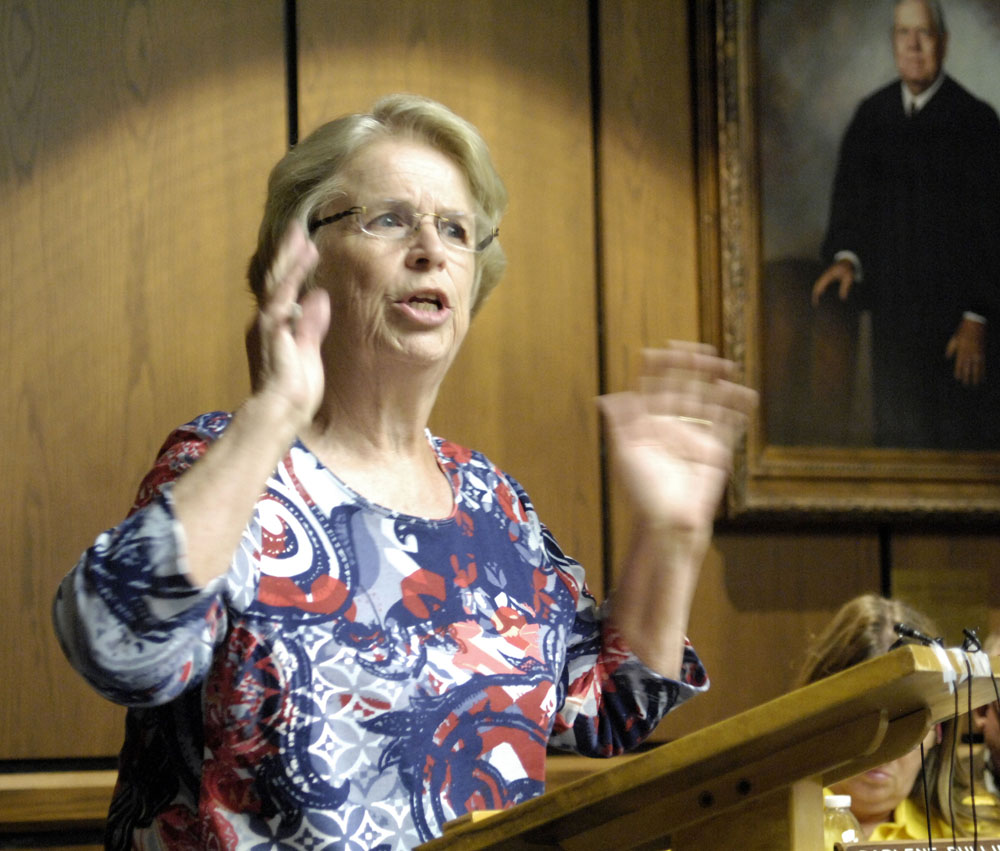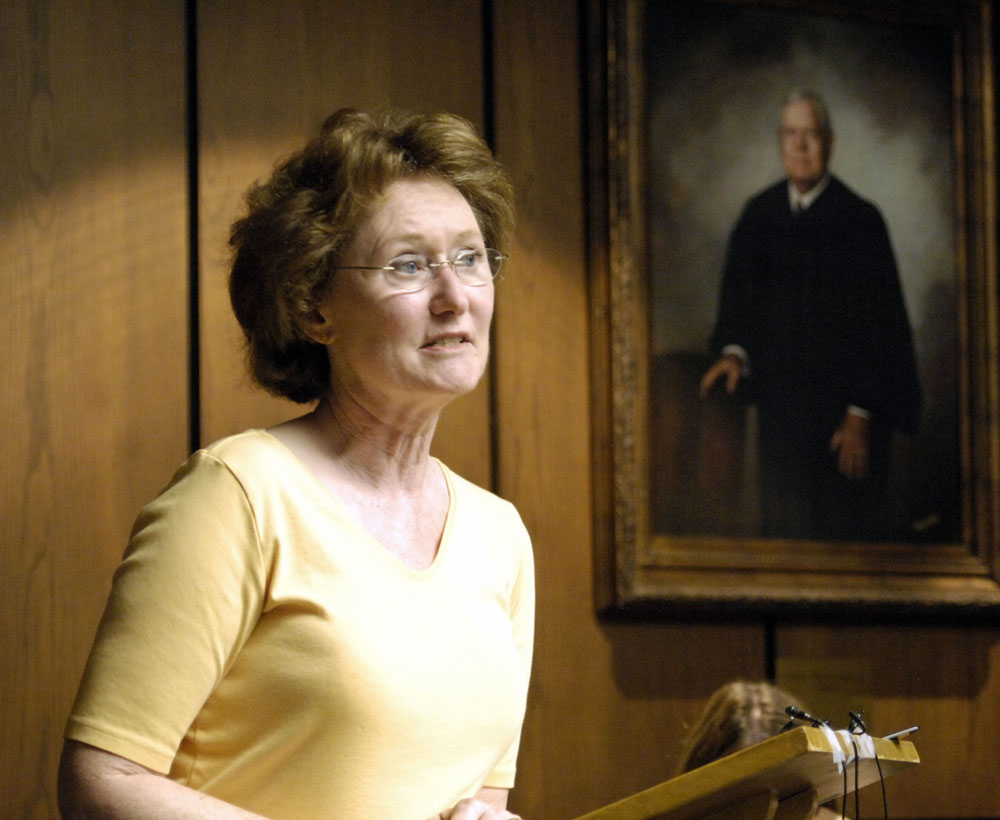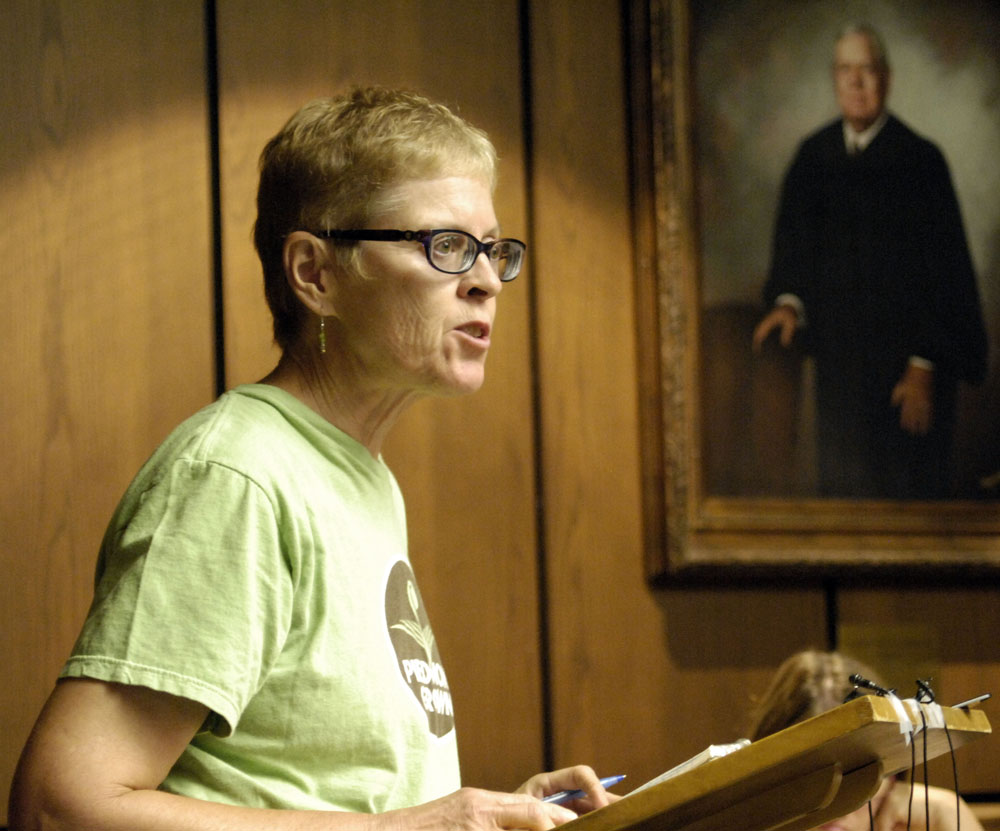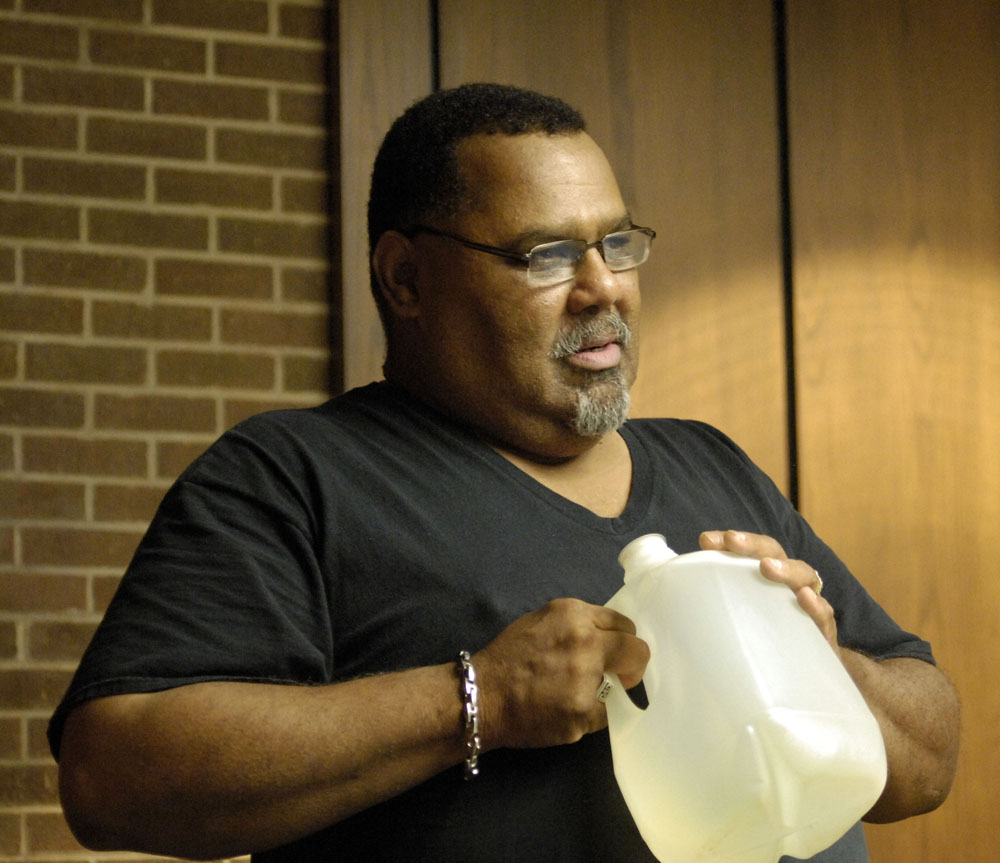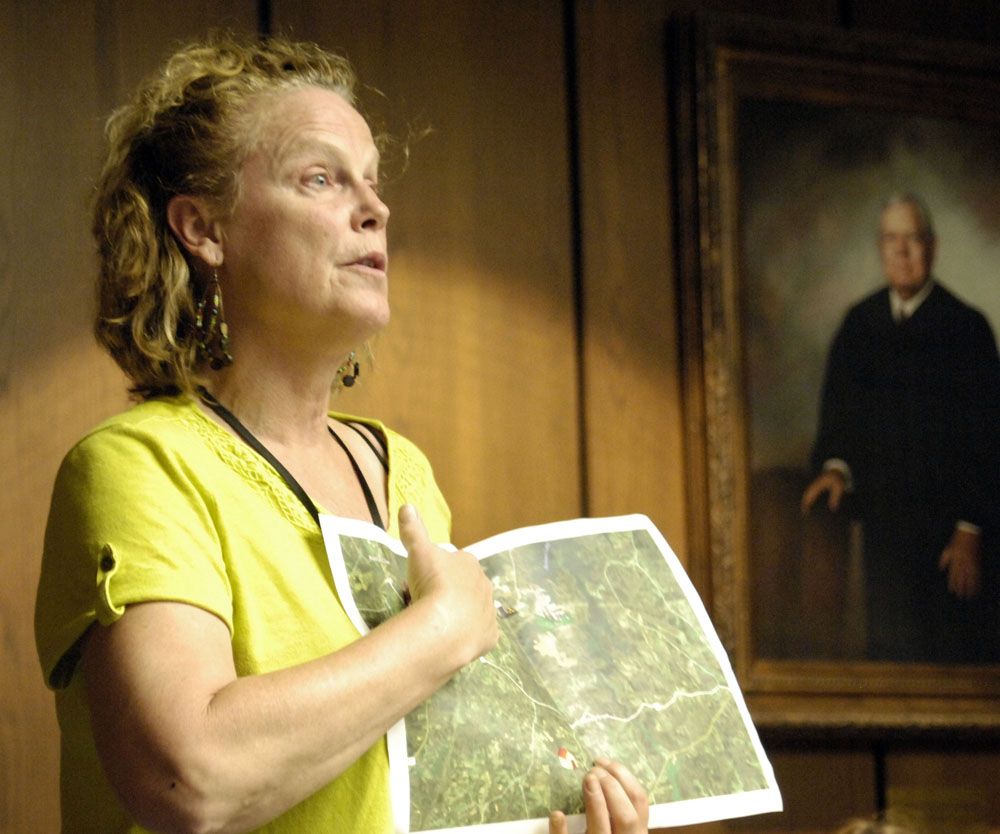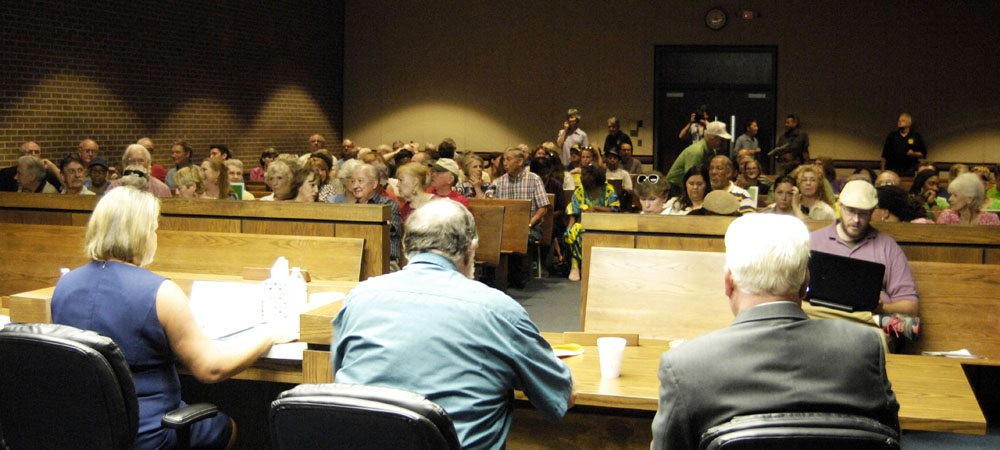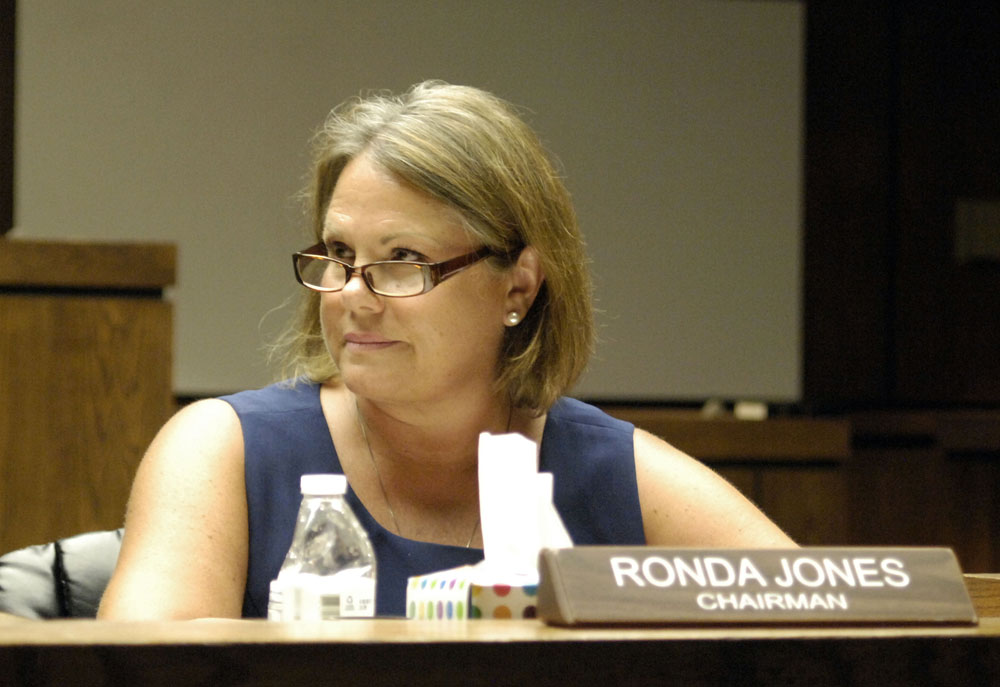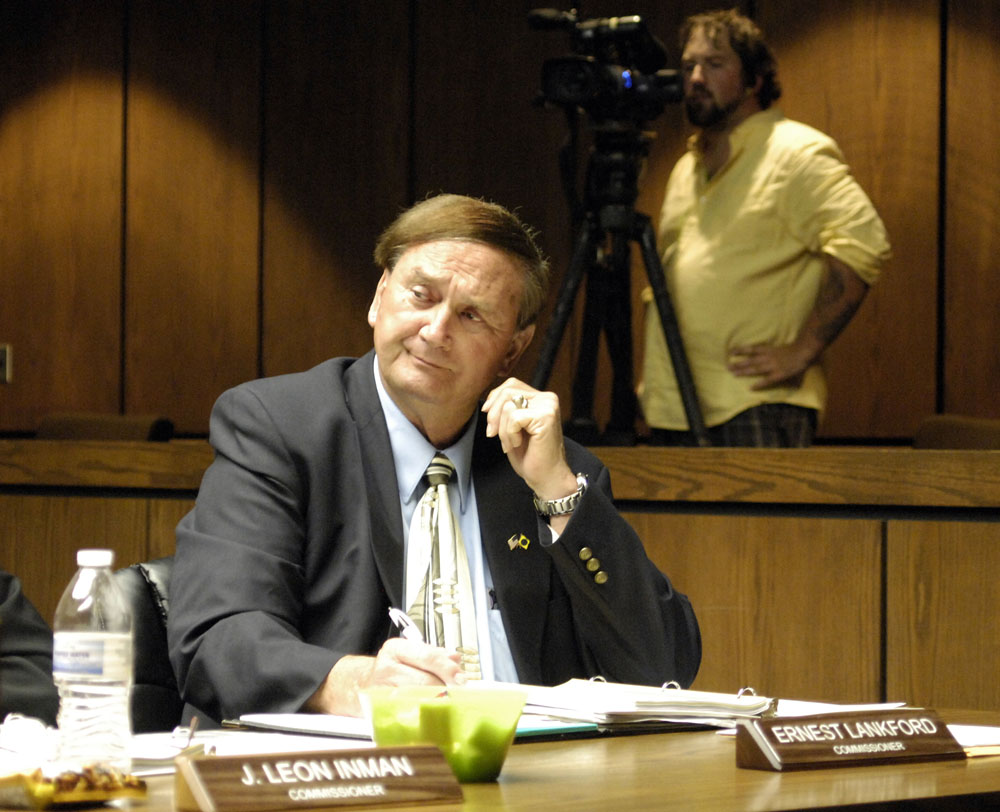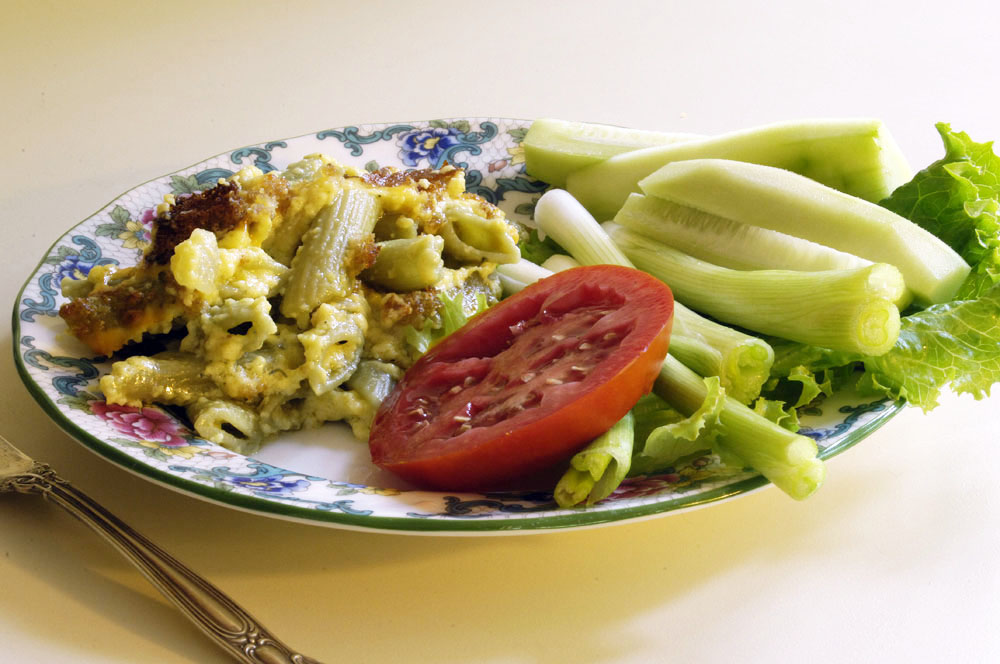If I had an acre of abelia, it wouldn’t be enough. I think the bees and butterflies agree. Who knew that abelia is a relative of honeysuckle?
Would you like fries with that?
Are you sure, Ursula?
Amongst the literati and literati-watchers, much has been made lately of Ursula K. Le Guin’s war on Amazon. Her first bombardment in this war was last year in a talk she gave at the National Book Awards. A couple of months ago, she continued with a post titled “Up the Amazon” at Book View Café.
As much as I respect Ursula K. Le Guin, and as much as I like some of her (slightly too literary) novels, she has still failed to convince me that Amazon, as a major bookseller, is of the devil. She writes, “Sell it fast, sell it cheap, dump it, sell the next thing. No book has value in itself, only as it makes profit. Quick obsolescence, disposability — the creation of trash — is an essential element of the BS [best seller] machine.”
I can certainly agree with her on that, but I’m not convinced that the trail of evidence leads to Amazon.
Has Le Guin, I wonder, ever been to a Walmart and examined the books on sale there? Or the grocery store? In Googling for “books at Walmart,” I came across a blog post by an author named Keli Gwyn. The title of the post was, “Six Reasons I Get Excited When an Author Gets a Book in Walmart.” She writes: “Of the few books that make it into Walmart, most were written by big-name, best-selling authors with a tremendous track record of sales. The noted exception is a series of books from a traditional publisher that has already gone through the process of getting approval from Anderson Merchandising.”
Uh-oh. Who is Anderson Merchandising? She writes: “Getting a book into Walmart is difficult. According to the Walmart website, each vendor of any product sold in Walmart must go through an extensive proposal process. Those selling books must contact Anderson Merchandisers, the company that stocks the book sections in Walmart stores.”
Who is Keli Gwyn? In her blog, she describes herself as “an inspirational historical romance author.” She says, “My favorite places to visit are other Gold Rush-era towns, historical museums and Taco Bell.”
I just puked.
Walmart sells very few titles, only mass-market things that will sell by the millions. Amazon sells everything, including titles that haven’t sold a copy in the last five years.
But there’s not just Walmart. I wonder if Ursula K. Le Guin has visited public libraries in America’s so-called heartland. She will find that half (I don’t think I’m kidding, though I have not done an actual count) of the books are inspirational historical romances by crank-’em-out authors. These crank-’em-out authors completely dominate the fiction shelves, with the titles of a single author sometimes two or three levels deep. I can’t tell you how many times I have walked the entire length of the fiction shelves in public libraries, A through Z, and found absolutely nothing to read. Even at the nearest used book store in Winston-Salem, which is pretty big, the shelves are filled mostly with mass market paperbacks by crank-’em-out authors.
Just a few days ago, I was in the nearest Barnes & Nobles. It was a Sunday. There were a lot of people there — the local literati. I make no attempts to keep up with any genre other than science fiction. But judging from the long science-fiction section with books by a great many authors, science fiction publishing seems to be doing as well as it ever did. (Though it puzzles me why Barnes & Nobles stocks so much science fiction and local libraries almost none.)
Anyway, I strongly suspect that Le Guin is blaming Amazon for phenomena that have much longer and deeper roots. Is Amazon making people dumber? Or are people just getting dumber? Is the market making people dumb? Or is the market just giving dumb people what they want? It’s sugar water in the grocery stores and Donald Trump on TV. Ursula Le Guin, I suspect, has lived in an ivory tower surrounded by academics for so long that she simply doesn’t know how dumb people are.
Amazon is the one place where you can buy any book, from any publisher, including university presses. If the book you want is out of print, you’ll be presented with a list of small booksellers who will sell it to you used, cheap, and get it to you fast. There have been a number of times when I needed a copy of an out-of-print book published in the 1930s and 1940s. I have always found it on Amazon. More than half the books I buy are from university presses. Would Ursula K. Le Guin really want me to stop buying these books on Amazon?
Of course, Le Guin’s issue is not about Amazon’s selling of books but rather about how Amazon’s marketing power is influencing publishers toward publishing crap, while also diminishing the compensation of authors. That may be an unintended consequence of Amazon’s market power, but all that Amazon really is trying to do is to keep the price of books down, in order to sell more books.
Le Guin accuses Amazon of “controlling what we read.” How could that possibly be, when Amazon sells millions of titles — more than anybody? Searching for any title, author, or subject you want is as easy as typing 1-2-3.
Notice also the slight disdain in Le Guin’s tone when she speaks of books that are self-published. She knows that, on principle, the ability of authors to easily publish their own books is something that she must approve of. But still I get the clear impression that it annoys her, because that too depresses the incomes of established authors with regular publishers and royalty streams.
One of my biggest disappointments recently where books and stories are concerned was the new “Poldark” series on British television (PBS in the U.S.). It is based on a series of very fine novels by Winston Graham, and a British television production of “Poldark” in the 1970s got it right. The 1970s television series was remarkably true to Winston Graham’s novels.
But Winston Graham died in 2003. The new television version of “Poldark” had been turned into an “inspirational historical romance.” Winston Graham must have rolled in his grave. The show was embarrassing to watch at times. It lingered on anything sentimental and edited in shots of flowers blowing in the wind to make sure we got it. The script focused mainly on romantic entanglements, attending to other parts of the story only when it couldn’t be avoided. Characters that were beautifully developed in Winston Graham’s novels and in the 1970s Poldark were severely neglected — because they didn’t have a romance going. Whoever adapted that screenplay would better serve the literary world by boxing up romance novels for overnight shipping at Amazon for $15 an hour.
Is it somehow Amazon’s fault that British television, PBS, Walmart, and the local libraries all now kiss the ass of the market for “inspirational historical romance,” or vampire novels (now out of style), or zombie novels (still in), or stuff written by authors who wear funny hats and crank out their plots while sitting in a Taco Bell? Even George R.R. Martin is whoring in the zombie market.
That in itself is a big part of the problem — authors who are whores to the market: romance writers, vampire writers, zombie writers, authors who crank ’em out so fast that they may have twenty or more titles in a single rural library. In J.R.R. Tolkien’s letters, written during the time when he was toiling away on Lord of the Rings, unsure of when and how it would be published, he often remarked that there was a very small market for what he was writing, but that those who wanted it were starved for it. And that, of course, is one of the reasons why Tolkien’s trilogy is so great. He wrote the story that was in him to write, for the few who were starved for it. And when he stopped having stories to tell, he stopped writing.
Is it necessarily bad that publishing is a big business? Niche readers know where to look. For the first time in the history of publishing, that which bigger publishers turn down now finds its way to small presses or gets self-published. George Herbert’s Dune was rejected by more than 20 publishers before Chilton, a publisher of car-repair manuals, finally picked it up. The publishing industry has always made mistakes. I don’t think Amazon is to be blamed for the existence of a mass market and the junk that feeds it.
In my opinion, if the publishing market can make an author filthy rich, then that author is done. Think of Stephen King, Anne Rice, Orson Scott Card, Tom Clancy, or Danielle Steele. Authors ought to be a little hungry, and they ought to be terrified of what the market will think of their book.
I think that Ursula K. Le Guin is being more elitist than she realizes. Maybe she should visit a Taco Bell. Many authors (including most dead authors) can’t get their books into brick and mortar stores like Barnes & Noble, which mostly carries what’s new, or even into neighborhood independent bookstores. I admire independent books stores, but if we read only from their thin stock, we’d be only slightly better fed than if we bought all our books, along with our sugar water, at the grocery store.
I will buy books wherever I damn well please. And the author who wrote those books, no matter who they may be, probably will be grateful for the sales.
Earl Crow, still teaching people to think for themselves
When I started at High Point College in 1967, fresh out of R.J. Reynolds High School in Winston-Salem, religion courses were required courses. High Point College (now High Point University) is still, I believe, affiliated with the United Methodist Church. However, its focus always was on the liberal arts, and the church did not try to keep it on a leash. Today, High Point University is a very different place with a lavish building and expansion program and, as far as I can tell, a focus on serving the modern economy.
In any case, I certainly would not have taken religion classes if I hadn’t been obliged to do so. As I recall, two semesters of Old Testament were required, followed by two semesters of New Testament. My teacher for both was Dr. Earl Crow. He later left High Point College for Wake Forest University. I was delighted a few months ago to see that Dr. Crow, now clearly in his 80s, had begun writing a column in the Winston-Salem Journal called “Everyday Religious Questions.”
Dr. Crow was one of the best teachers I ever had. He and a few other members of the faculty at HPC showed me something that I had never encountered before, despite the four-star reputation of the high school I had attended. That was the concept of teaching young people to question and to think for themselves, as opposed to opening a funnel at the top of their heads and allowing stuff to be poured in.
As I recall, my final paper for the New Testament class was on whether Jesus was mentally ill. There is a considerable body of academic literature on this, so researching such a paper was not particularly hard. There obviously was no censorship involved in what got into the High Point College library. I found many sources there to draw on.
I will never forget that Dr. Crow gave me an “A” on this paper, and I’m pretty sure I recall his giving me a funny smile when he handed me back the paper. If I’m not mistaken, I got an “A” for the course. No doubt I got a lesser grade for Old Testament, and I regret not ever having written a paper exploring whether everyone in the Old Testament was mentally ill. I should add here that I don’t think Dr. Crow gave me an “A” for this paper because he thinks that Jesus was mentally ill. I think it was because he knew that I was paying attention in class and because he likes not only good papers, but also open minds.
Imagine that. My hostility toward Christianity even then was well along. If you want to despise the church, pretty much all you need to do is to think for yourself and be dragged to a Baptist church for your entire childhood. (On the other hand, I have been in black churches, country churches, fairly often lately, and they teach a very different gospel of justice and equality, as, of course, do some “liberal” churches.)
But here’s the thing. Every fundamentalist I’ve ever encountered imagines that he knows quite a lot about the Bible. I have never met a fundamentalist who knew a damned thing. It’s also always assumed that I don’t know anything about the Bible. Because every fundamentalist assumes that, if you know something about the Bible and have actually read (most of) it, then you’d be just like them. Feeble minds think everything is obvious.
Dr. Crow, it seems, has spent his life opposing the forces of fundamentalism, inside the classroom and out. I found a book of his on Amazon, self-published, I believe, called Bible Stories You Shouldn’t Tell Your Children. One reviewer says that Dr. Crow “picks at scabs that fundamentalists don’t even want to acknowledge.”
In his column in the Winston-Salem Journal, Dr. Crow takes on questions sent in by readers, such as, Should Christians engage in war? What about the Christian concept of hell? You have mentioned that Paul felt women should be submissive, but were there not strong women portrayed in the Bible?
Apparently the Journal does not have a web page that collects links to all Dr. Crow’s columns, but here is a link to a search command that should find them.
While I was reminiscing about High Point College, another teacher came to mind whom I have thought about often over the years: Emily B. Sullivan, whose job as an assistant professor of English was to teach freshmen and sophomores how to write while guiding them through English and American literature. Though I never could quite make out what “existentialism” is (still can’t), and though I pretty much choked on pretty much the complete works of William Faulkner including his unbearable trilogy, I will never forget Emily Sullivan. She was the first person who ever told me that I should be a writer. Her love of literature was infectious. She understood — and somehow managed to impart to us — what beautiful English sounds like. On my papers, she often wrote little comments in French, but she was all about solid Anglo-Saxon English. It was Emily Sullivan who taught us how to scan poetry and from whom I first learned words such as “dactylic.” I have had fun with this all my life. I hope it cannot be said that any of Emily Sullivan’s students ever committed plagiarism. I am sure she checked our sources, and we would never have dared to fail to properly attribute, and to accurately represent, the ideas of others. One comma out of place and you were doomed down one letter grade. On some assignments for English composition, one grammatical error and you got an “F”. Can you imagine a professor doing that today? It would be considered abuse.
I have often referred to the concept of “intellectual DNA.” We pick it up from our mentors and associates, and from our reading, and we pass it on. It has been years since I worked as an editor. But even today, young people I encounter who care about language are likely to get my exhortations about English — its rhythms, some high-water and low-water marks in its history, the dangers of its vast vocabulary, and the poetry and precision that it is capable of. They would not know, of course, that I am passing on to them DNA that I received from people like Emily B. Sullivan. Who might Mrs. Sullivan have received it from? I will never know. I also don’t mean to imply that intellectual DNA always passes from the older to the younger. Often, young people get way ahead of older people. As evidence of that I need to mention only someone like Jedediah Purdy, whose new book After Nature: A Politics for the Anthropocene, just arrived. I probably will have a review of it before long.
Vegan meat loaf: a recipe
I almost never post recipes here, mostly because I rarely write down recipes of my own concoction. However, I’ve written down an approximate recipe for my vegan meat loaf. It’s a very healthy, low-glycemic, high-protein dish that keeps well and makes great leftovers. The intent is not to make a meat analog and trick anyone into thinking they’re eating real meat loaf. Rather, the intent is just to make a good vegetarian main course. It’s also a low-cost dish. Most of the ingredients can be bought in bulk. I usually think of it as a winter thing, but with the small steam oven I can make it in the summer without dumping too much heat into the house.
Soak the soybeans overnight. Cook them according to any recipe for cooking soybeans. I usually cook them in the pressure cooker. Drain the beans but reserve the liquid.
Soak the hulled barley overnight. (Pearled barley does not need soaking.) Cook the barley according to any recipe for cooking barley.
Coarsely chop the walnuts. Chop the onion fairly fine. Mash the soybeans with a potato masher. Mix all the ingredients in a big bowl. Use good judgment about whether the mixture looks too dry. When it’s finished baking, you want it to be firmly set in the pan but not too dry. If the mixture looks too dry, add a tablespoon or two of the soybean cooking water.
Put the mixture in an oiled bread loaf pan. Drizzle the top with oil. Cover the pan with foil. Bake it for about an hour in a 325-degree oven. It should be sizzling, moist, firm, and not too crusty when it comes out of the oven.
Serve it hot and sauce it with brown gravy.
If you like this dish enough to make it a second time, then alter the recipe to suit your taste. I like the texture and chewiness of the walnuts and barley. If you’d prefer a texture more like a paté, then you can use a food processor. Vary the seasonings. Make it more sassy by substituting more Worchestershire sauce for some of the tamari. Try curry paste or harissa instead of ketchup. Consider adding some herbs, or an egg. This a basic recipe that you can customize for your family’s tastes. You can modify this recipe to make a breakfast sausage by diminishing the amount of barley and walnuts, increasing the amount of wheat gluten, and seasoning it with sausage spices such as sage and pepper. As sausage, keep the mixture in the refrigerator, and fry in it patties for breakfast. It’s the combination of barley and wheat gluten that give the loaf its meaty chew. Experiment with the proportions of the ingredients to get a texture you really like.
Too much of it left over? Ran out of leftover gravy before you ran out of meat loaf? Use it to stuff peppers or to make cabbage rolls. Or reshape the leftovers into burgers and fry them. Use it in, say, a layered squash and cheese casserole the way you might use ground beef.
We’d all benefit from eating more barley — especially hulled barley, which is a whole grain. If you read up on barley, you’ll find that it has a very good influence on the digestive system. The gladiators were sometimes called “barley eaters.” The ancient Greeks also ate a lot of barley. If you’re not an experienced barley eater, start with pearled barley before you work up to the much more rustic hulled barley. We all know that walnuts are good for us. Soybeans are an excellent, cheap source of protein. I can’t imagine eating soybeans as a solo dish, but they go well with other hearty ingredients. The combination of amino acids in seed, legume and nuts (barley, soybeans, and walnuts) make a high-quality vegetarian protein.
Serve it with any vegetable. This is a dish with which you definitely won’t want any bread. Maybe that’s why I made it today — to deal with my temptation to make more sourdough bread.
A little moral reasoning

Photo by Wildlife Conservation Unit
As the outrage swelled around the cruel and meaningless death of Cecil the lion, the memes intended to shame people started showing up on Facebook. The Black Lives Matter movement, anti-abortionists, veterans — everybody got in on the memes and op-eds. The theme was always the same: What is wrong with you that you show more concern over one dead lion than [insert cause here].
On Facebook and in letters to editors, I often am shocked by people’s apparent inability to handle even basic moral reasoning and by their inability to detect fallacy.
As for those of us who felt rage over the killing of Cecil, are we so small and limited in the range of our moral concerns that we can be concerned about only one thing at a time? Can we not be concerned about both Cecil and about veterans who are going without medical care? Is it written somewhere that concern for the welfare of animals must somehow be deferred until perfect justice for all human beings is achieved? Who has the right to try to shame us for our lesser concerns while claiming — narcissistically, I would say — that their cause trumps all other causes? Instead, why don’t we divvy up all the deserving causes and each of us choose the causes we’ll focus on according to our own experiences and passions?
I prefer the term moral philosophy, though one can also call it ethics. Moral philosophy has changed a great deal over the centuries as our understanding of justice has changed and evolved to become more inclusive. Probably the most prominent text at present in the field of moral philosophy is John Rawls’ A Theory of Justice. The book is a very demanding read, but it’s well worth it.
There is a preacher in this county who constantly writes letters to the editor scolding those of us who don’t share his black and white, Augustinian, hell fire and damnation notions of morality. In a letter just last week in which he raged against marriage equality, he wrote: “If truth can change, it’s lie — it’s false!”
Horse shit. King Solomon had 700 wives. David had eight. “One man one woman” actually was a pagan innovation and did not originate with Abrahamic religions such as Christianity. Christianity picked it up from the pagan Romans. So what changed? If you pointed out to this local preacher these small factoids from the Bible he thumps to assert that he is always right, his authoritarian mind simply would not be able to see a contradiction. Cognitive dissonance would shut him down. He sees moral reasoning as a slippery slope to hell and instead clings to his blacks and whites.
Is the life of one lion worth more when there aren’t many lions left, as opposed to the time when the African jungles were full of lions? Does it matter how and why a lion dies? Are the lives of human beings worth less when there are 7 billion of us rather than 300 million? Does it matter how and why human beings die? Is the life of an obnoxious and cruel dentist from Minnesota worth less than the life of a Princess Diana? Are the lives of any two human beings worth more than the lives of the last two lions on earth? Would the world be a better place if the life of Cecil the lion could be exchanged for that damned dentist?
I’m not necessarily taking a position on any of these things. I’m just saying that they’re worth thinking about. And I refuse to be shamed by those who seem to think that it’s shameful to care about animals before humanity’s problems are all solved. If that were the case, neither our wild animals nor the billions of animals kept on factory farms will have a chance, ever.
Artisan bread: Trying to reach the next level
A little research suggests that bread books fall into two basic categories: Books for people who want good bread without investing a lot of time and trouble; and books for people who want the best possible bread no matter how much fuss or apparatus is involved. I’m in the second category. The first bread book I ever bought was James Beard’s Beard on Bread, the 1973 edition. Much has changed since then. Americans know a great deal more about good bread than they used to, so we have much higher expectations.
I shopped around for a book for those who aspire to artisan-quality bread. Peter Reinhart, author of The Bread Baker’s Apprentice, believes that 80 percent of the quality of bread is in the quality of the dough and that only 20 percent relates to the oven. I remain somewhat skeptical of that, because I doubt that Reinhart struggles very often with unsatisfactory ovens. But I do take his point — that making the dough is very, very important.
The first recipe I tried from the book was his basic sourdough recipe. I tend to not slavishly follow recipes, but in this case I thought I owed it to Reinhart to follow his recipe — he calls them “formulas” — as carefully as possible. Reinhart’s philosophy is that the fermentation process must be long and slow, so that biological and chemical processes can break down the starches and bring out the flavor. I am not going to argue with that. I have tended to rush breads, including sourdoughs. I won’t do that anymore, because Reinhart’s s-l-o-w sourdough was by far the best bread I have ever made. It may even have been the best bread that I have ever had, including in San Francisco and Paris. Both crust and crumb were superb, and the flavor was incredible. By the way, I have been using King Arthur organic unbleached flour (which is shockingly pricey but worth it), a sourdough starter that I ordered several months ago from Breadtopia, Celtic sea salt, and filtered well water. That’s it.
I think I have pretty much identified where my breadmaking skill needs to be improved to get to a really professional level. The new steam oven has solved a major problem. I’ve acquired a baking stone and a baker’s peel, which are necessary for hearth-baked breads such as sourdough. I think I’ve learned my lesson about rushing breads, and I won’t do that anymore. My remaining problems have to do with the final shaping of the loaf and getting the loaf, once it hits the oven and springs, to go upward rather than to sprawl. I’m getting better at creating the surface tension in the final dough shaping to make that happen. Steam is essential, or there won’t be much oven spring at all. And when you bake on a flat stone to get a good bottom crust, there’s no pan there to keep your loaf from spreading. But as for the taste of my sourdough bread and the quality of the crust and crumb, I’m happy.
Reinhart includes a thermometer in his list of essential equipment. I got one. For the sourdough bread, he suggests a final internal temperature of 200 to 210 degrees. No problem; 207 degrees is when bread looks done to me, but the thermometer certainly helps control the process. He likes proofing baskets but considers them optional. I’ve ordered some Banneton proofing baskets, and I hope they will help to get my loaves to push upward in the oven rather than to sprawl.
The diet scale has been in the closet. I’d better get it out and start watching my weight again.
Alfredos
Who doesn’t like an Alfredo? You can no more not like an Alfredo than you can not like a doughnut, or a potato chip. Though heavy cream is not as deprecated as it once was, it still seems pretty decadent. But because I am a decadent person, I always stock Organic Valley cream. I use it in my morning coffee. My half & half days are over. The cream is always there in the fridge in case I take a notion to make homemade ice cream. And of course I use it in wicked cream sauces. I make a beautiful faux-Bernaise with cream rather than a true Hollandaise (though I am resolved to be quicker to make real Hollandaise sauces and real specialty mayonnaises with, say, olive oil. We Southerners love our mayonnaise.
One way to diminish the sheer decadence of Alfredo sauces is to use spaghetti squash as the pasta. It just so happens that spaghetti squash cooks excellently in the new steam oven. It’s surprising, really, what a satisfying substitute spaghetti squash is for the real thing. Alfredo sauce over spaghetti squash is a very low-glycemic meal that eats (as we say in the South) as good as a high-carb meal.
This Alfredo was made with garlic and fresh tomato, topped with roasted asparagus. I’m using three modes of cooking here — the steam oven, plus the grill, plus a saucepan on the stovetop. It’s thrilling to have multiple modes of cooking just a few steps apart. The grill is on the deck, and the door to the deck is just to the right of the kitchen stove and steam oven. I don’t know why I waited so long to upgrade the kitchen. Cheap, I guess.
The tomato, by the way, was a gift from a friend who is a retired agricultural extension agent for the county. I count two former, and one current, agricultural extension agents among my friends. Former and current agricultural extension agents make excellent friends. Ken is in Alaska this summer, so there is absolutely no glory in the abbey’s garden this year.
Faces of the First Amendment
My camera is one of the most important political tools I have. Whether it’s a political campaign or organizing for environmental groups, photos are important, especially on social media.
I find photos of public meetings strangely moving. Sometimes they capture the spirit of a Rockwell painting. I’m thinking, of course, of Rockwell’s “The Four Freedoms.” Freedom of speech and freedom of assembly are the bedrock of our American democracy.
These photos were taken at a commissioners’ meeting last night. A coalition of environmental groups and plain unaffiliated citizens pleaded with the Stokes County commissioners to draft and approve an ordinance protecting the county from fracking and coal ash. Here’s a link to a news story on what the meeting was about.
On the one hand, this was a heartwarming outpouring of love for our county and concern for our rural way of life. Black people and white people, conservatives and liberals, are working together in this county like they never have before. But I also am a cold-blooded political operative. This event was organized. Back in May, environmental activists had politely asked the commissioners for an ordinance. They crudely blew us off. This was payback. Note the attitude of one of the commissioners in the last photo. It’s the classic attitude of an authoritarian who’d rather not be bothered with the people — at least when the people disagree with him.
Yum. Mac and cheese.
One of the hippest places in San Francisco when I was there was (is?) the Virgin Records store on Market Street, just across from the Apple Store. On the third level, with big windows facing Market Street, was (is?) a small café. They had lunch specials there, and sometimes the lunch special was “mac and cheese.” I, not being hip, had never heard it called that. In the context of food, “Mac” meant entirely something else to me. But with my clever skills of discreet cross-cultural observation — watching the natives — I figured out what it was. It was macaroni and cheese. They let me order some. It was good.
So macaroni and cheese, then, is an all-American phenomenon, not just something that we white-trash Southerners eat. I wouldn’t give you two cents for quick-made macaroni and cheese stirred up on a stovetop. Proper macaroni and cheese is a slow food. It must be baked. You will not be surprised to hear that I baked this batch in my new Cuisinart steam oven, using the the “steam/convection bake” mode. It was very good. For all its carb-iness and comfort-food qualities, it’s actually a fairly low-glycemic food. One must, of course, use good pasta, eggs laid by Helen and Fiona, organic milk and butter, and good cheese.
I figured that I had earned the comfort food, because I got back to writing this weekend after more than a month of slacking. I’m not sure why I hit a block. It may be my feeling of obscurity owing to the fact that Fugue in Ursa Major sells only in a trickle. Why work so hard on the sequel? Or it may be that I was faced with a couple of difficult scenes — turbulently emotional scenes, Jake’s last day on earth before leaving on a long trip.
But this weekend I got Jake shuttled up to a deep-space cruiser operated by the galactic union. Jake, forlorn, dropped his book and fell asleep in his posh bedroom, and in the morning he will meet the mysterious galactic ambassador at breakfast.
What a team. No wonder we earthlings blew ourselves up. The ambassador will probably call the whole thing off after he actually meets us. What is this, Jake? Search your feelings. It’s shame. That’s what it is — shame. Shame for the planet I come from, shame for the state it’s gotten itself into, shame for the pathetic crew who are supposed to find a cure for their pathetic planet, and shame because my even being here is some kind of mistake.
Poor Jake. It is difficult being cruel to characters we love, but sometimes we must. But he can have comfort food at breakfast.


